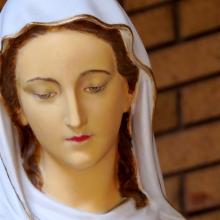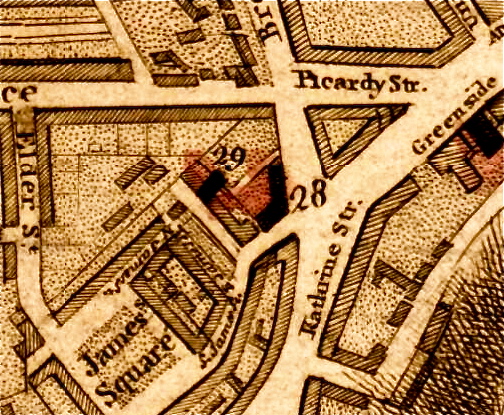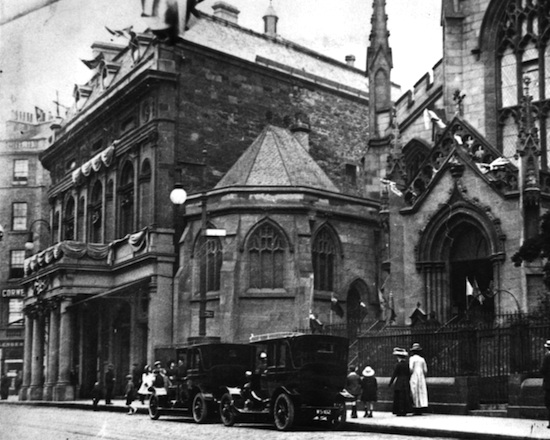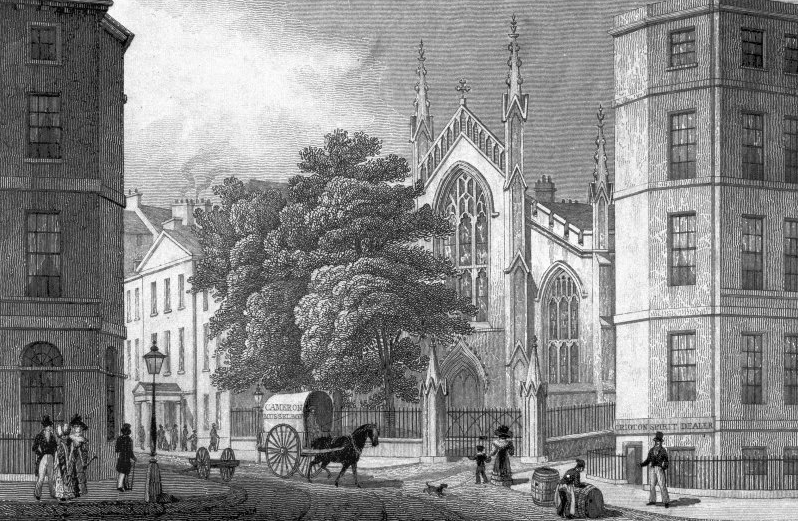
On 15 August, St Mary’s Roman Catholic Cathedral at the top of Broughton Street will celebrate its 200th anniversary.
To mark the occasion, it has commissioned a book – A History of the Cathedral by Dr Darren Tierney – to be published later this year.
This will tell the story of St Mary’s 'not simply as a building, but as a living community of bishops, priests, religious and laity. It is hoped to have wide appeal given the Cathedral’s history and important position within Scottish Catholicism.'
Two public lectures have also been arranged: one by Tierney, author of the new book, at a date to be confirmed; the other, on 5 September, by Professor Tom Devine.
The Cathedral is taking part in Doors Open Day on 27 September, when guided tours of the building will be arranged and Simon Nieminski, Cathedral Organist, will give a short recital at 4.00pm.
Contact www.stmaryscathedral.co.uk for further information.
Until Dr Tierney’s book becomes available, here are some choice historical nuggets of very local interest.

To the rear of the site was the St James Place Relief Church (built in 1800 and marked 29 on the map), which was later used as the Cathedral’s halls between 1934 and 1978 and now serves as the collection centre for John Lewis.
Various spellings of Kathrine Street had existed locally since the 1790s, when they first appeared in honour of Catherine Swinton, wife of William Ferguson who owned land to the north of the road and was the developer behind St James Square. Swinton Row, later notorious as home of the Kosmo Club (Issue 223), was also named after her.

The site (now partially occupied by Café Camino) continued to be associated with secular public entertainments, in particular the disaster-prone Theatre Royal which burnt down for the last time in 1946 and was demolished in 1960. (Image, above-right, from www.skyscrapercity.com)
James Gillespie Graham designed the first structure in 1813, and an inaugural Mass was celebrated here the next year. The same appendix to Arnot History of Edinburgh cited earlier noted that 'The purest Gothic architecture is studied here; the door enters by a pointed arch supported on columns, and the windows are also pointed above. Pinnacles, according to the antique, rise from the front, which is to the east and produce a fine effect to those who admire the stile adopted. The chapel is about 100 feet long, by 52 broad.'
Only the neo-Perpendicular facade of that structure survives after redevelopment and extension in the 1890s. Further internal modifications to the roof followed in 1932, relieving what was previously felt to be the building’s oppressive gloominess.

The illustration comes from Modern Athens, drawn by Thomas H. Shepherd and engraved by W.H. Bond. The accompanying text notes that ‘The small Chapel is situated in Broughton-street, in the immediate neighbourhood of the Caledonian theatre ... Much of the architectural ornament, however, exhibited on Mr. Gillespie’s plan was dispensed with, on account of the insufficiency of the building fund. As it stands, the Chapel cost £8,000.’
Since 1879, the Cathedral has kept a large part of St Andrew's shoulder blade in a reliquary donated by the Marquess of Bute.
Finally, Bellevue residents may care to know that the central altar in St Mary's used to be in the Catholic Apostolic Church in Mansfield Place (now the Mansfield Traquair Centre). It was designed by the architect Robert Rowand Anderson, as was the brass lectern in the form of an eagle which also flitted uphill at some point after the last of the congregation moved out in around 1958.
Do you have any relevant nuggets you'd like to share with us? If so, please get in touch by email: spurtle@hotmail.co.uk or Twitter: @theSpurtle or Facebook: Broughton Spurtle